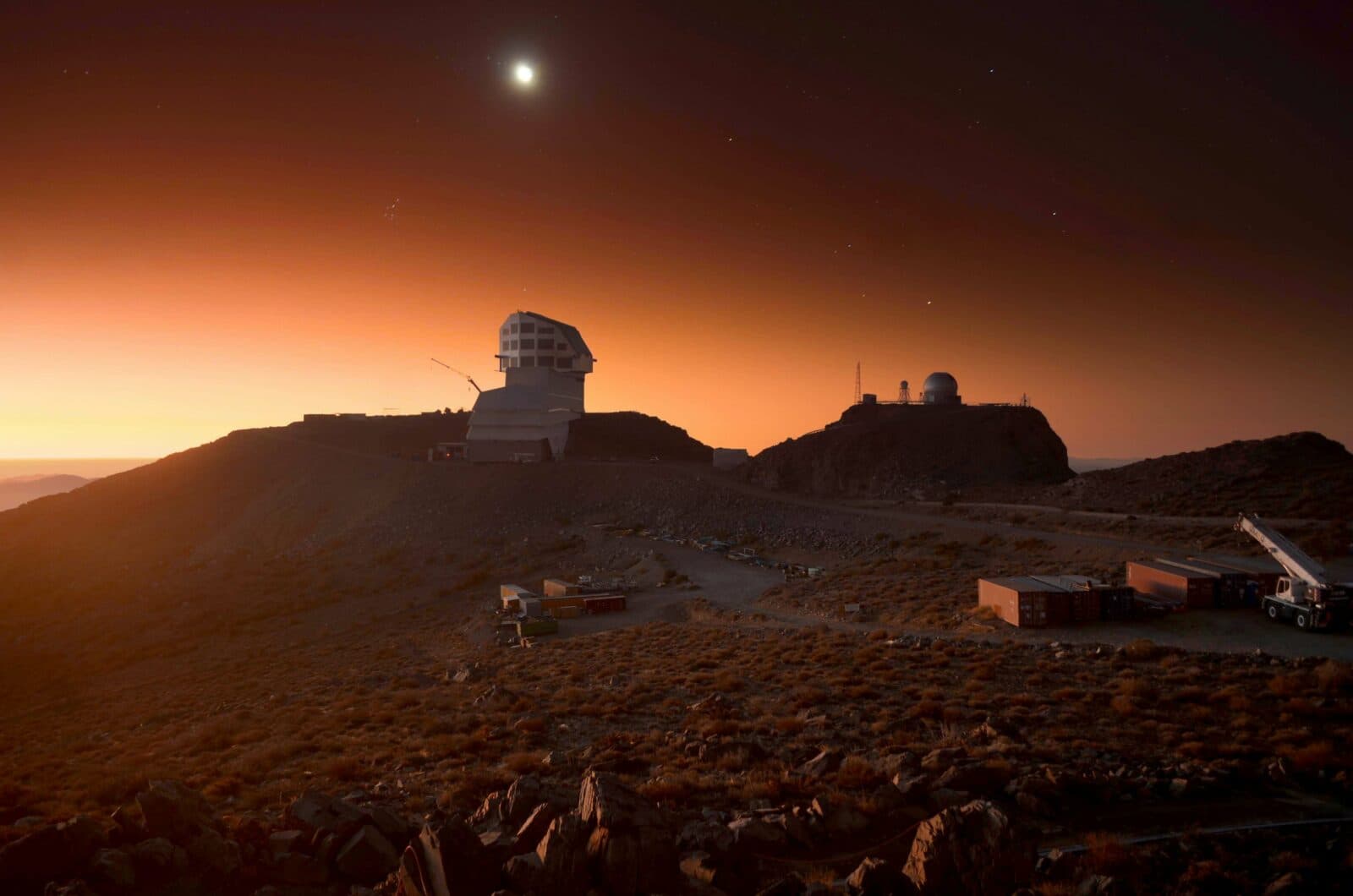Big Insights from Smaller Cosmological Scales
by Adam Hadhazy
Part 2 of our 'Looking Ahead to Rubin' series explores how capturing granular details about matter distribution in the universe can deepen our knowledge of fundamental physics

The Author
Our understanding of the dynamics of the universe is about to be revolutionized, thanks to the Vera C. Rubin Observatory. Come 2024, this observatory is slated to begin its Legacy Survey of Space and Time (LSST), a campaign that will observe the full sky every three nights over the course of a decade. The survey will capture an unprecedented amount of astrophysical data, opening our eyes to the cosmos as never before.
Groups of researchers worldwide have banded together in forming science collaborations to provide scientific expertise for the Rubin Observatory. Many Kavli Institute-affiliated researchers belong to these science collaborations. This article is part of a series profiling these researchers and the advances they expect the groundbreaking observatory will deliver.
When it comes to the Rubin Observatory, the superlatives come easily. To wit: LSST will leverage the largest digital camera ever built, in order to conduct the widest and deepest survey of space ever.
For all this big-ness and utmost-ness, though, the LSST will also gather novel and critical information on smaller scales. Specifically in a cosmological context (admittedly rarely the domain where the adjective "small" comes up), LSST will capture the locations of millions of galaxies, granularly revealing just how matter has been disbursed across the vast expanses of the universe.
This information is of great value to Jia Liu. She is the co-leader of the Higher Order Statistics (HOS) topical team, a group of researchers that have joined together within the LSST's broader Dark Energy Science Collaboration (DESC). Liu and her colleagues are looking to smaller cosmic scales to help answer fundamental questions about the materials and forces that shape the whole of the universe.
"The HOS team tries to extract cosmological information from the matter distribution on small scales, about a few tens of millions of light years, which is not small compared to our daily life, of course, but it is indeed small compared to the size of our universe," says Liu, a Project Associate Professor at the Kavli Institute for the Physics and Mathematics of the Universe (Kavli IPMU) at the University of Tokyo. "LSST is particularly good at observing these scales that were previously inaccessible to us because of its unprecedented high-precision observational capacity."
As Liu explains, theoretical modeling is currently lacking for cosmology on these smaller scales. The usual analytic methods researchers rely on have proven insufficient on more modest scales, where complicated nonlinear physics comes into play. Liu and her team are therefore developing a novel set of higher-order statistical tools (which gives rise to the team's name) that can handle and make sense of the smaller-scale observations and measurements. In order to prepare for when the hotly anticipated LSST data arrives, and which should be flowing in bulk in a couple years or so, the researchers are also running a bunch of cosmological simulations that incorporate these tools.
Overall, Liu anticipates key insights into the physical reality undergirding the ostensible universe. "We expect rich information on fundamental physics, such as dark energy, dark matter, and neutrino mass, from these scales," says Liu.
Taking those entities in turn, dark energy is the term for the poorly understood, yet strongly evidenced majority constituent of the cosmos, estimated to comprise 70% of its total mass-energy. Dark matter is thought to be a particle-like substance beyond the present ken of physicists, that interacts with normal matter via gravity and outnumbers this normal matter roughly five-fold. Neutrinos, for their part, are arguably the wonkiest particle presently known. Unlike their fellow matter particles that are otherwise elegantly well-described in the revered Standard Model of particle physics, neutrinos force physicists to think differently by apparently possessing mass—albeit an amount so miniscule that it continues to defy measurement.
By crunching all the numbers on the observed universe versus simulated universes with tweakable physical parameters, researchers are getting closer and closer to solving these sorts of physical quandaries. Liu spends much of her time in this pursuit working on numerical cosmology –– "running cosmological simulations on supercomputers to understand the origin and evolution of our universe," she says. In this vein, cosmic neutrinos are a more recent interest of hers. "I realized that we can use our universe to measure the fundamental parameters of these teeny-tiny particles," Liu says. "This connection between the extremely large with the extremely small is intriguing to me."
Initially in university and early in her career, Liu had actually chosen human resources and business as her focus, having been dissuaded from pursuing science while growing up. As Liu wrote in an article entitled "How I Defied Expectations to Become a Female Scientist," she eventually enrolled in an astronomy Ph.D. program and made the major career transition.
In getting to work with the Rubin Observatory and co-leading the HOS team, it seems that Liu is fulfilling her destiny.
"I am drawn to the largest, most extreme, and furthest-in-time questions, so cosmology was a natural path," says Liu. "In addition, along the way, I discovered that I am fascinated by programming and simulations. So running numerical simulations of our universe became a perfect fit!"